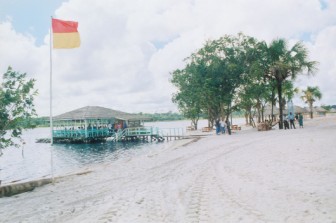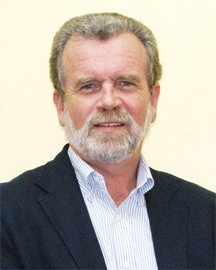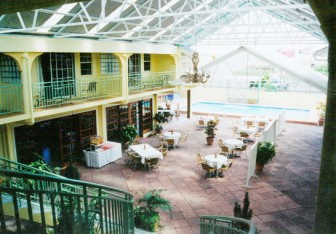A study aimed at confirming the status of the tourism industry as a significant contributor to the country’s Gross Domestic Product (GDP) could be completed by year end, according to President of the Tourism and Hospitality Association (THAG) Paul Stephenson.

The initiative to have the study undertaken with the support of specialist multilateral agencies and as a collaborative public/private sector venture comes on the heels of positive assessments of both the recent performance of and prospects for the sector. According to Stephenson, it could trigger both additional investment in the sector by existing stakeholders, as well as new local and foreign investment. “It could turn out to be tremendously significant for the country’s tourism industry,” Stephenson told Stabroek Business.
Stephenson said his own “very, very conservative estimate” indicates the tourism sector contributes approximately US$81 million annually to the country’s economy. His estimate, he said, is based on more than halving the average visitor spending of around US$300.00 per night over a two-week period. “The real figure could well be double my own estimate,” the THAG President told Stabroek Business.

“Tourism is undoubtedly an export sector, a hard currency-based sector. There is no question that it will help to grow Guyana’s economy.”
And according to Stephenson his unofficial US$81 million estimate of the sector’s annual contribution to the local economy more than justifies an initiative “to provide us with substantial confirmation” of the extent to which the tourism sector contributes to the country’s GDP. “Once the outcomes of the study are presented to the Minister of Finance we will be seeking to secure a budget for tourism,” Stephenson said.
And the THAG President is predicting that the signs of recovery already evident in the regional tourism sector following a downturn attributable to reduced visitor arrivals from North America and Europe in recent years could impact positively on Guyana’s ecotourism product. “All of our resorts are currently in good shape though I expect that there will have to be some amount of upgrading, remodeling and restructuring to respond to the need to make them more eco-friendly. I expect, for example, that diesel power will have to be replaced with solar power at our resorts. Overall, however, the product is good.”
In what was an otherwise upbeat assessment of the quality of Guyana’s tourism product, Stephenson cited the state of the country’s capital as a biggest single incentive to increased visitor arrivals. “The biggest single negative has been the comments from visitors regarding the state of the capital. The international traveller will not tolerate a dirty city. What we need is a collective effort on the parts of the government, the municipality and, equally importantly, the citizens, to raise standards and turn the situation around.”

Meanwhile, Stephenson told Stabroek Business that THAG is seeking to help position the sector to take advantage of up to “between 200 and 300 tourists a day” that traverse the area between northern Brazil and Venezuela. “If Guyana can attract even twenty or thirty per cent of that market it could make a significant difference to the sector. However, Stephenson declined to provide a time frame for the creation of a thriving cross-border tourism market pointing out that much work still needs to be done, “including the improvement of the requisite facilities at Lethem”. Stephenson, said, however, that there is “a great deal of optimism” about prospects for developing the market. THAG, he said, was particularly encouraged by the level of interest on the Brazilian side as evinced by a scheduled visit to Guyana by representatives of the Tourism Bureau of Boa Vista later this year.




